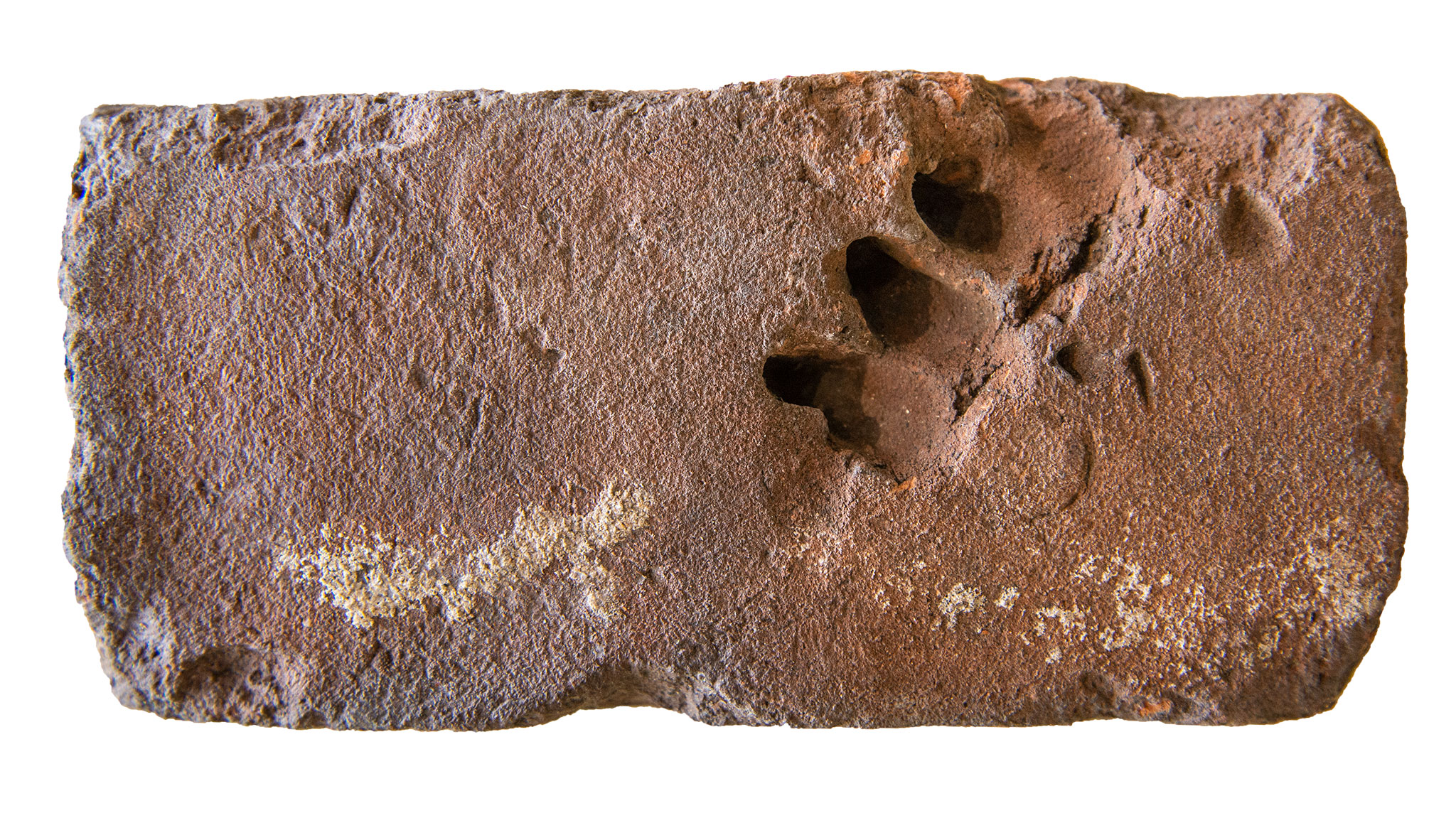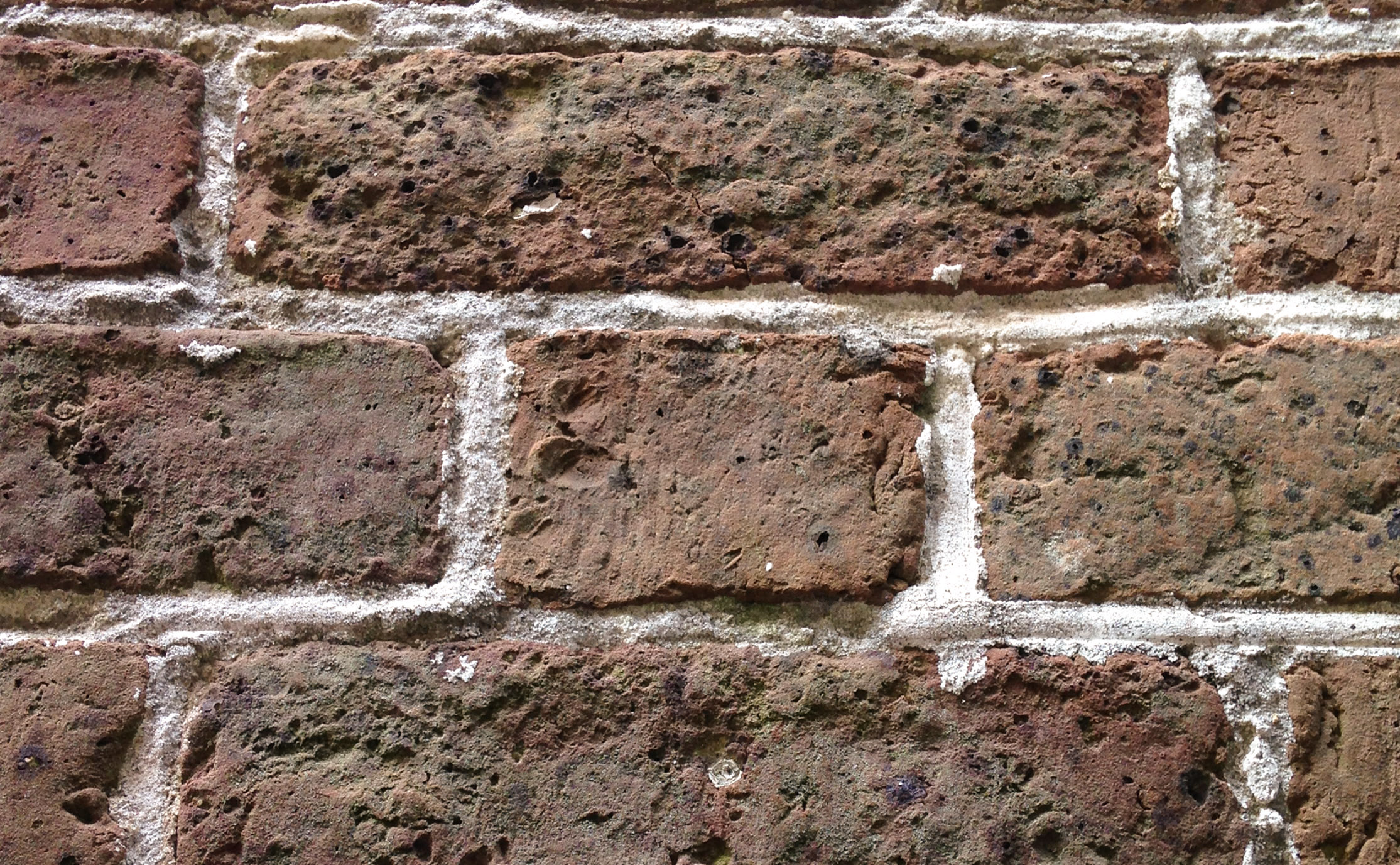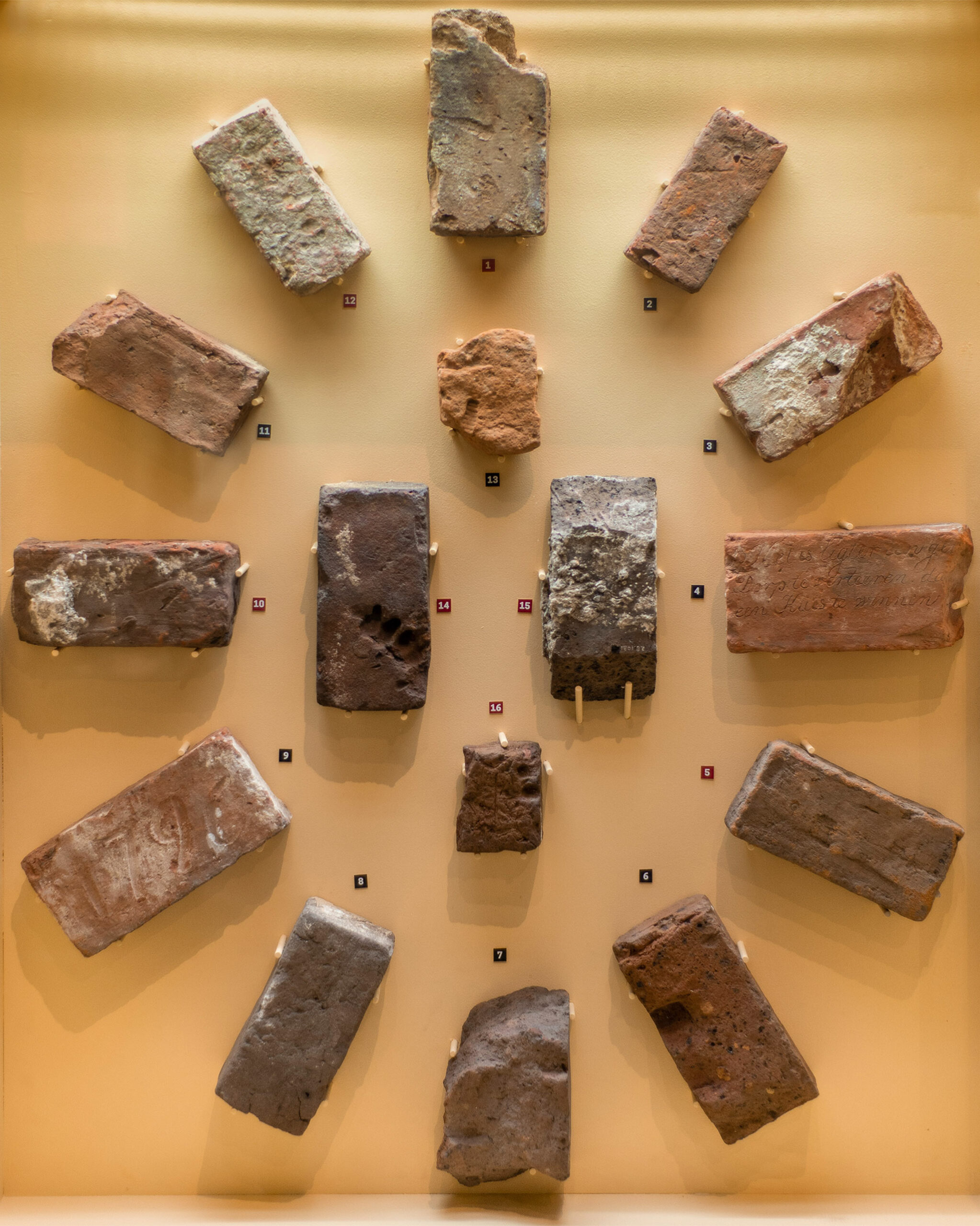Charleston Bricks and Fingerprints of the Enslaved
 Once you see them, you can’t not see them. That is the case with fingerprints preserved in locally produced bricks, a signature of the people who made them from local clay, for houses, storefronts, and fortifications. Still other skilled artisans, often enslaved, constructed the houses, storefronts, and fortifications of Charleston from these bricks. It was Joe McGill, founder of the Slave Dwelling Project, that first raised awareness of this “signature” of the laborers, mostly enslaved Africans, who toiled in the clay pits and near the kilns on plantations, producing bricks as a winter product. This simple, inadvertent signature of unfree labor preserved in brick samples in the Museum’s history and archaeology collections and in the walls of its historic houses prompted Museum staff to name bricks with finger impressions among our top ten artifacts.
Once you see them, you can’t not see them. That is the case with fingerprints preserved in locally produced bricks, a signature of the people who made them from local clay, for houses, storefronts, and fortifications. Still other skilled artisans, often enslaved, constructed the houses, storefronts, and fortifications of Charleston from these bricks. It was Joe McGill, founder of the Slave Dwelling Project, that first raised awareness of this “signature” of the laborers, mostly enslaved Africans, who toiled in the clay pits and near the kilns on plantations, producing bricks as a winter product. This simple, inadvertent signature of unfree labor preserved in brick samples in the Museum’s history and archaeology collections and in the walls of its historic houses prompted Museum staff to name bricks with finger impressions among our top ten artifacts.
While rice is the best-known product from lowcountry plantations, brick production was an important enterprise, providing as much as a third of the plantation owner’s profits. Plantation owners on the Wando, Ashley, and Cooper rivers produced brick for the Charleston market. According to Dr. Lucy Wayne, between 1740 and 1860 there were 79 recorded brickmakers, half of them located on the Wando River. Brickmaking required suitable clay, sand to temper the clay, fuel to fire the kilns, enslaved labor, and ready transportation to market.
A master brickmaker and three to four helpers could mold 5,000 bricks per day. In 1849, nine Christ Church brick plantations produced 9,000,000 bricks made by 288 enslaved laborers. These workers were men and women, and sometimes children. Tasks at the brickyard during firing included stowing the kiln, hauling wood, unloading the kiln, and loading finished bricks for transportation to Charleston.
Brickmaking began though with clay extraction and preparation. It was then molded or formed, in “frames” of mahogany constructed for multiple bricks. The “brickmaker” was a skilled artisan who supervised a group consisting of the molder, a carrier, a digger, a carter, and a boy to drive the oxen for tempering the clay. Once filled the molds were taken by the carrier to the drying area where the bricks were turned out in rows to dry for 24 hours. When bricks were dry enough to be handled, they were removed from the rows and placed in “hacks” or stacks, for further drying over two to three weeks.
It was during this process when the enslaved might leave fingerprints in sundried bricks that were handled too early. They often, inadvertently, left a finger imprint, a smudge, or a squished place in the brick, essentially “signing” their work for us to see.
Bricks in the Museum’s collections were gathered principally as examples from particular buildings, particular eras, or particular architectural styles. However, a review of these collections soon revealed a number of them with fingerprint evidence, pointing to the prevalence of the artists’ signature. Visitors to the Charleston in the Antebellum Era exhibit can see locally produced bricks from across the lowcountry, and a replica of from the 1730s occupation of the Heyward-Washington House. Visitors to the Heyward-Washington house can also find numerous examples in the south wall of the 1772 house as you traverse the driveway.
As you stroll through Charleston, remember to look for fingerprints in the brick. They are everywhere.



